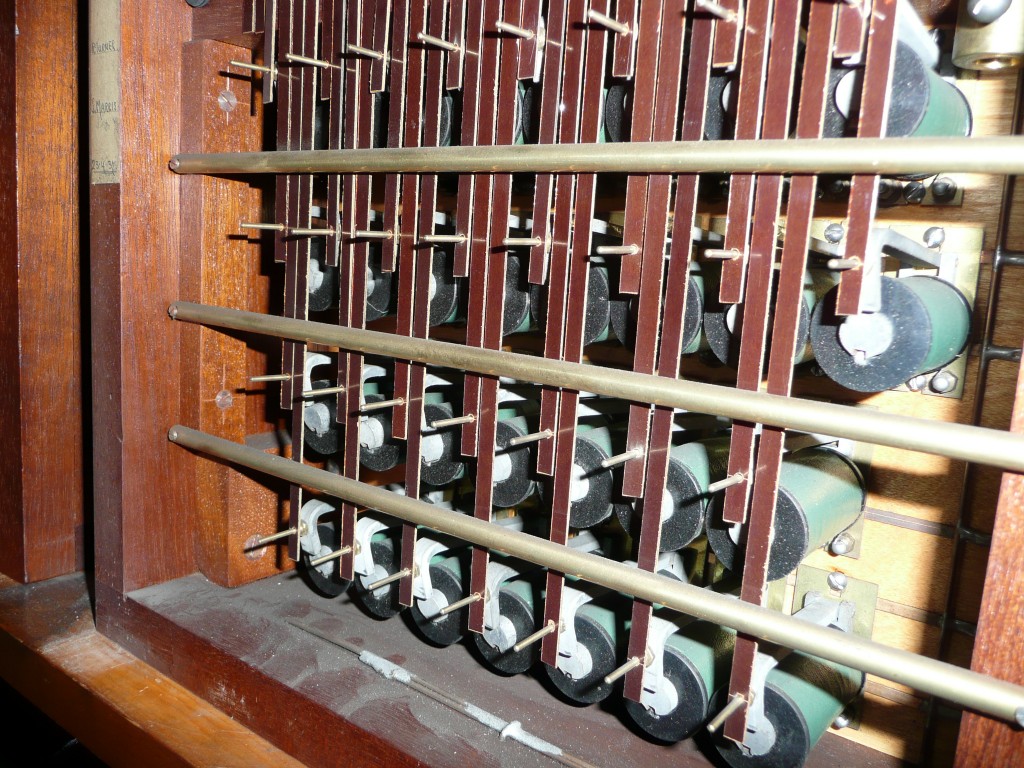
The matrix relay exploits the basic function of the relay, which is to provide a logical ‘and’ function to control the pipework, thus:
“Note is played” and “stopkey is ‘on'” = pipe plays.
Matrix relays are less elaborate than stop switch relays, consisting of a matrix of contact wires in which the columns correspond to the notes and the rows to the stops. The contact wires are connected to the pipe action magnets on the windchests.
A conducting metal bar is arranged below each row of contact wires and is raised slightly – not enough to touch the contact wires however – when the stop is turned ‘on’.
Similarly, a non-conducting perforated strip is fitted around each column of wires. The strip is attached to an action so that when the corresponding note is played, the strip is pulled downwards. The contact wires, poking through the perforations, are also deflected downwards as well.
If the stop contact bar is raised (stop ‘on’) and a particular column of contact wires deflected downwards by the strip (note played) then contact wire touches the contact bar and the contact wire is energised. Current flows to the particular magnet on the windchest and the pipe sounds.
Matrix relays, although simple, do depend on good engineering and proper maintenance as working clearances are quite small and have to be carefully maintained to ensure prompt action. The sight of a large matrix relay is impressive; Compton used them widely, as did Hope-Jones and some early Wurlitzer organs.
On some very small organs, the matrix relay may be built directly into the console.
